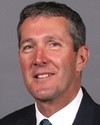Thank you very much, Mr. Chairman.
Let me introduce my team. Brian McCauley is responsible for legislative and regulatory affairs. Jim Ralston is the chief financial officer for the Canada Revenue Agency. Barbara Slater handles most of our operation. All of the returns and the service to taxpayers associated with the returns are handled through Barbara.
First, I would like to thank you and your colleagues for this early opportunity to appear before this committee. The Main Estimates that are before you for consideration call for an appropriation of $3.2 billion for the Canada Revenue Agency. That is an increase of $189 million over last year.
Before I respond to questions, please allow me to briefly provide some context for the $3.2 billion we plan to spend on tax and benefit program administration for the coming year. In 2004-2005, the Agency collected over $300 billion in revenues. That's an average of over $1.2 billion for every working day of the year.
The $3.2 billion we're seeking is a large amount, but it represents slightly more than one penny for every dollar of revenue collected.
The agency also distributed close to $12.5 billion in benefit payments to millions of families and individuals on behalf of the federal, provincial, and territorial governments as well as first nations.
In the coming year, we are poised to administer many of the new measures announced in budget 2006, such as the proposed universal child care benefits and the reduction in the GST rate to 6%.
In 2004-05 the agency processed more than 24 million individual and trust tax returns and 1.5 million corporate tax returns. It provided joint program delivery for 141 client governments and agencies, answered approximately 22 million public inquiries over the phone, peaking at times, such as during the recent tax season, to more than 35 calls per second.
We recorded 24 million tax-related visits to the CRA website. We're also very proud of having trained over 15,000 volunteers, who completed more than 458,000 simple tax returns for low-income eligible taxpayers.
To accomplish all of this, the Canada Revenue Agency has approximately 44,000 full- and part-time employees across Canada; 81% of our workforce is located outside of headquarters.
As the Main Estimates indicate, it will cost slightly more to maintain Agency services to Canadians in the coming year. The main reasons the authorities are going up include: the impact of recent collective agreements; the cost of providing additional services to the Canada Boarder Services Agency, which are being fully recovered from them; increased costs associated with administering measures in the 2004 and 2005 federal budgets; and changes to the Children's Special Allowance Statutory Vote.
These increases are partially offset by savings, including a reduction in government-wide employee benefit plan rates, as well as by program savings resulting from the expenditure review exercise.
As I mentioned earlier, in 2004-05 the agency collected over $300 billion for Canadian governments. As of May 4 of this year, we had received about 21 million tax returns from individuals. That is up by more than 600,000 for the same time last year.
This year we were able to accommodate increases in workload within our budget, in part by realizing internal economies and reallocating the savings. We remain committed to serving Canadians within the budget provided while ensuring that our tax system generates the revenue needed to deliver the government programs that Canadians expect.
Mr. Chairman, my colleagues and I would be pleased to answer any questions the committee may have.




